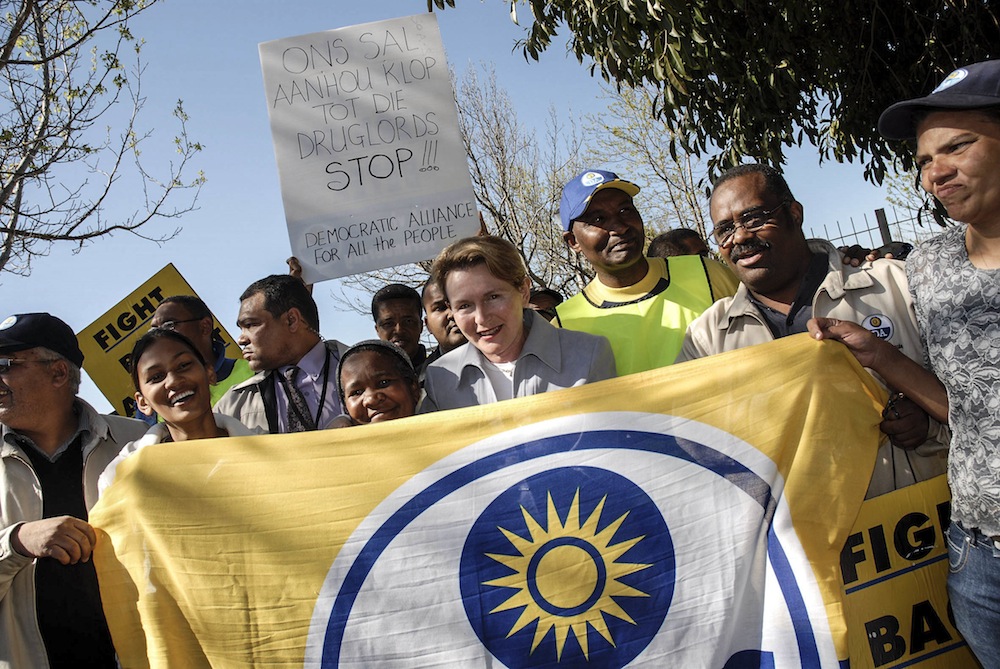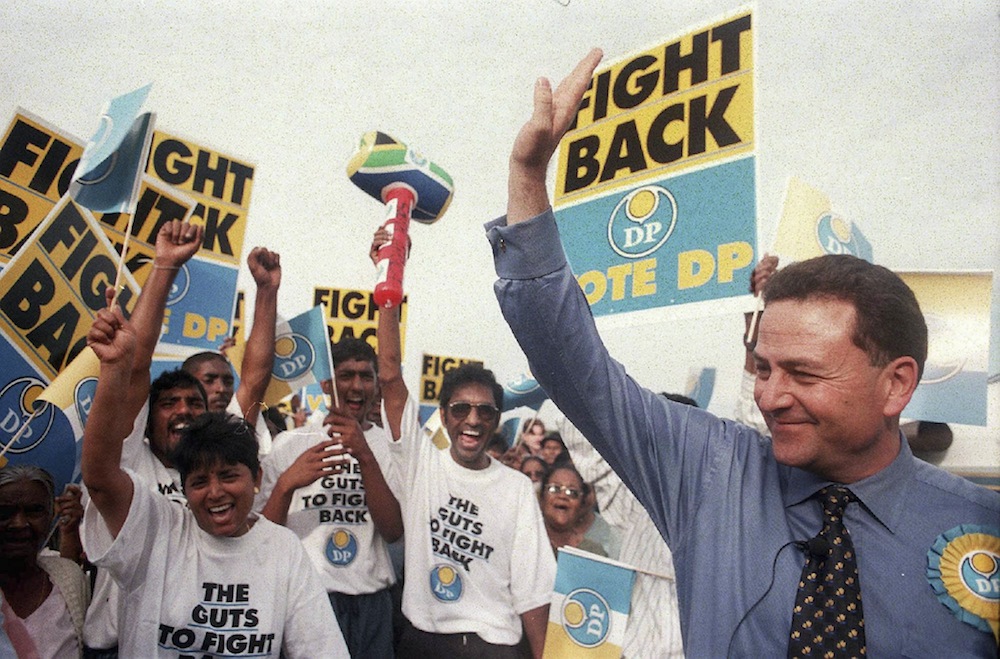DA leader Mmusi Maimane. (Troy Enekvist/M&G)
NEWS ANALYSIS
The plan all along was for the Democratic Alliance to change, be relevant, win over black voters and incrementally take over one metro after another. The party’s victory in Nelson Mandela Bay, its majority in Tshwane and winning the nation’s economic heartland, Johannesburg, comes after planning stretching back some 15 years.
Ryan Coetzee, the DA’s former chief executive, said there were always two key elements the party focused on even before 2000: becoming a party of “all South Africans” and not just of a white minority, and proving that it was more than just an opposition party.
“The most important thing was establishing those two cornerstones of DA strategy immediately after the 1999 election, when the Democratic Party [its old name] became the official opposition. All the other documents written in the 2000s and first part of this decade were really just dealing with how to achieve those objectives,” he said.
In the 2000 municipal elections, the DA won the City of Cape Town, ushering in the beginning of coalition governments in the Western Cape.
By 2006 the wind of change had firmly shaken up the traditionally white liberal party, and Coetzee and a team put together a document titled Becoming a Party for All the People: A New Approach for the DA.
There was, however, dissent among conservatives in the ranks as the party strained in a new direction.
“As is the case in any party, there is sometimes disagreement about how to go about things, but the DA has always been unified behind the two objectives. Consider that in the 2000 local elections, the slogan was ‘For ALL the people’ and in 2011 it was ‘The DA delivers’,” said Coetzee.
Jonathan Moakes, who worked with Coetzee and is now DA leader Mmusi Maimane’s chief of staff, said the plan had been to first focus on one metro they could win.
“It was clear that the numbers were most favourable in the City of Cape Town for us to show that we could govern a sizeable metro,” said Moakes.
That strategy led the DA to an outright majority in the Western Cape after the 2009 elections. By then Tony Leon had stepped down, ushering in Helen Zille’s tenure as party leader from 2007.
Despite some dissenting voices, Zille bought into the plan put forward by young guns including Coetzee to unify voters. At the electoral results centre in 2009, she said the party had to change.
“We don’t have a choice. If we didn’t go this route, we would be nowhere by now. I have not guaranteed it will work, but it was our only option,” she was quoted as saying.

Helen Zille (above), now premier of the Western Cape, led the DA for eight years after taking over from Tony Leon (below).
(Top: David Harrison, below: Rajesh Jantilal/AFP)

Though the 2011 local government elections saw the party win Cape Town with an outright majority, it had reached its ceiling in many of its traditional strongholds – and those areas were no longer going to provide the numbers the DA needed to take more metros or provinces.
In 2011 the party was sitting at a measly 2.3% in the likes of Motherwell in Nelson Mandela Bay and 6.5% in Tshwane townships. Another plan was clearly needed if the party did not want to become a one-province party.
After eight years in charge, Zille had to leave, even though she had grown the DA from 16% in the 2009 national election to 23% in 2014. At the time she admitted that new blood was needed; putting a black leader in place was crucial to the party’s future.
Though Moakes denies that Zille stepping down was part of the DA’s long-term strategy, he agrees that Maimane standing as the face of the party was exactly what it needed.
In addition to planning, the party has devoted almost obsessive attention to data and numbers, which has paid off. “It is about crunching the numbers and setting goals, and this has allowed us to campaign more effectively,” said Moakes.
“We set stretched targets, and a lot of people were very cynical of our chances of bringing the ANC below 50% in Jo’burg and Tshwane. But it came down to all the work we have done in the past 10 years or so.”
August 3 showed how the DA’s plans finally came to fruition. The numbers paint a picture of how the party, through focused campaigning and stringent goal-setting, could increase votes from 1.5% to 5.5% in Kwanobuhle and in Khayelitsha from 1.7% to 7.5%.
The DA has long claimed that it will be in a coalition government running the country by 2019, and will win an outright majority in 2024. It was a plan that struck its critics as a grandiose ambition. But after the 2016 local government elections, the party may just be on track to meet its goals.